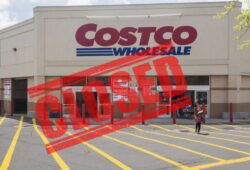Email marketing is one of the most effective ways for businesses to connect with their customers and promote their products or services. With over 4 billion daily email users and over 306 billion emails sent and received each day, it’s clear that email is still an essential communication tool in our daily lives.
As the number of email users continues to grow, so does the potential for businesses to reach their target audience. According to HubSpot, email marketing revenue is expected to reach almost 11 billion by the end of 2023, which highlights the significant role email marketing plays in modern marketing strategies.
One of the key benefits of email marketing is its ability to personalize content. With 77% of marketers sending personalized content to their subscribers, email marketing offers a unique opportunity to tailor messaging to specific demographics like gender and age. This personalization leads to increased engagement, which can translate to higher click-through rates and ultimately, increased sales.
In fact, email marketers make an average of $42 in sales for every $1 spent on sending emails. Additionally, each $1 spent on email marketing generates an average of £32.28 (around $40) in sales. This makes email marketing one of the most cost-effective marketing channels for businesses of all sizes.
While the optimal click-through rate (CTR) for an email marketing campaign is around 3%, this may vary depending on the industry. However, by optimizing and personalizing email campaigns, businesses can increase their CTR and ultimately, their revenue.
Best practices for effective email marketing campaigns
Email marketing is a highly effective way to reach potential customers and engage with current ones. However, with inboxes flooded with promotional emails, it’s essential to make sure your messages stand out by delivering engaging and targeted content. Here are some best practices for effective email marketing:
- Know Your Audience: It’s crucial to know who your target audience is and what they’re interested in. This will help you tailor your messages to their needs and preferences, making them more likely to engage with your content.
- Personalize Your Emails: Using personalized subject lines and content that speaks directly to your audience will make your messages stand out and increase engagement rates.
- Keep It Simple: Your emails should be visually appealing but not cluttered. Use concise language and clear calls to action to make it easy for readers to understand what you want them to do.
- Timing Is Everything: The timing of your emails can make a significant difference in their success. Send your messages at a time when your target audience is most likely to be checking their inbox, such as during business hours.
- Test and Measure: It’s essential to track the success of your email campaigns and make adjustments as needed. Use analytics tools to measure open and click-through rates and make changes to your messaging accordingly.
By following these best practices, you can create engaging and targeted email campaigns that resonate with your audience, increase engagement rates, and ultimately drive conversions for your business. Effective email marketing can be a valuable tool in your overall marketing strategy, helping you build and maintain strong relationships with your customers.










